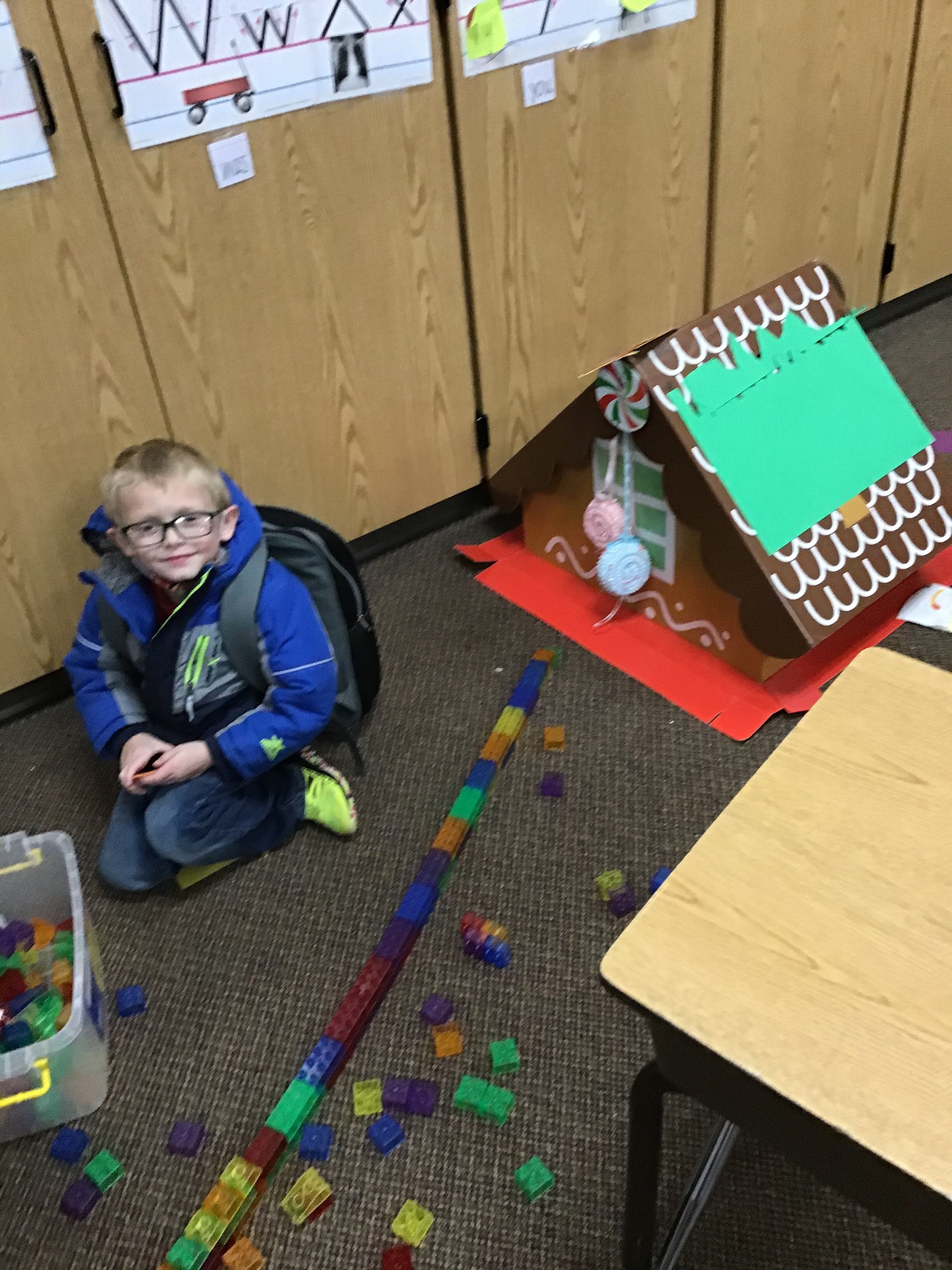Project Name: The “Gingerbread Man” Fairy Tale STEAM
Grade Level: Kindergarten
Number of Students: 17
Indiana Standards project aligns with:
K.RL.2.3 Identify important elements of the text (e.g.,characters, settings, or events).
K.RL.4.2: With support, compare and contrast the adventures and experiences of characters in familiar stories.
(E)K-2.E.1: Pose questions, make observations, and obtain information about a situation people want to change. Use this data to define a simple problem that can be solved through the construction of a new or improved object or tool.
K.G.3 Model shapes in the world by composing shapes from objects (e.g., sticks and clay balls), and drawing shapes.
K.G.1 Describe the positions of objects and geometric shapes in space using the terms inside, outside, between, above, below, near, far, under, over, up, down, behind, in front of, next to, to the left of, and to the right of.
List of Supplies
Any version of the “Gingerbread” story and The Gingerbread Man by Karen Schmidt.
Chenille stems
tape
glue
popsicle sticks
foil
design plan from fairy tale kit for STEM journaling
Puppet theater to act out the story (optional)
puppets (to learn story elements)
story wands and a story glove with characters included (from STEAM kit)
iPad or iPhone to record rafts and to test them to see if the Gingerbread Man made it across the water without getting wet.
Gingerbread cookies (optional) for decorating and to graph which part they ate first and to see if the cookie dissolves/or sinks/floats in cold/hot water.
Gingerbread Man Position Activity PowerPoint by Tammy Williams on TPT website (optional).
Lesson Plan
Lesson objectives:
Students will be able to identify important elements of the text (e.g.,characters, settings, or events).
Students will be able to compare and contrast experiences of characters in familiar stories.
Students will be able to collaborate to solve a problem.
Students will be able to model shapes by composing shapes from objects when building their gingerbread rafts/models.
Differentiation strategies to meet diverse learner needs: The kindergarten students worked with the “Gingerbread Man” fairy tale STEM kit from Lakeshore Learning Store. If they needed extra help; they were able to work in small groups and collaborate as a team. Students were given “voice and choice” when designing their rafts/models. As an extension piece, students could create houses for their Gingerbread characters. My students also designed favorite character hats to use when retelling and comparing/contrasting the gingerbread stories.
ENGAGEMENT: The teacher will capture the students’ attention by bringing out the story, “ The Gingerbread Man” by Paul Galdone. Students will first take a “picture walk” of the book. The students will “think/pair/share” and make predictions of the book. Next, the teacher will read the story, but not reveal the ending. The teacher will then present the STEM challenge, which is; “Can you design a way for the Gingerbread Man to safely cross the river?” If you are able to collaborate with another class, then they can read the story and model how to retell using the puppets from the Lakeshore kit or they can make their own.
EXPLORATION: Students will work independently at their small group tables, but are allowed to collaborate to solve the problem/STEM challenge.
Create (Engineering Piece): Students create models of their plans using only the materials provided. I also had “real-world” photos showing different ways to cross a river. I showed the photos and encouraged new vocabulary words. Some of these photos and vocabulary words included: kayaks, canoes, rafts, floats, upstream, downstream, buoyancy, structure, stability, weight, gravity, and bridges.
The students will first plan their design and then try to design a way for the Gingerbread Man to safely cross the river without getting wet by using materials the teacher has given them. The students will plan a design in their journals/or “Gingerbread Man” planning sheet included in the kit. Students fill out the “planning section” first before they create their model. When finished, they test their design and then check to see if it worked or not. If it did not work, then they can go back and try again. However, if it did work, they can fill out the last half of the planning sheet with their working design and check that it did work. If you have early finishers, then students can create houses for their gingerbread man, decorate gingerbread cookies, create hats/puppets used for retelling and to boost creative expression. In addition, a small group of students worked with the teacher to use the materials included in this kit to build a raft. Each group can take turns after properly sanitizing the materials.
After allowing students the opportunity and the time to explore independently, the teacher will act as a guide and facilitate questions, such as “What was the most challenging problem to solve when you built your model?” “What was it made of?” “How could you improve your design?” Once you read the story and another version of it, then the teacher can ask, “Could this story happen in real life?” “Why or Why not?” “Can you create a different ending for the story?” “What is the same/different?”
EXPLANATION: Collaborate with students to discuss what happened and if their model worked or not. If not, they can go back and re-try. I did have a few students that had to try again and the other students in their group were very supportive.
Ask students, “How did your final design differ from your first design?” “What was the problem?” “Did you solve the problem?” “Why or Why not?” “What are some other ways you could help the Gingerbread Man cross the river?”
For an extension, the students could compare their designs to other students’ successful designs and compare piece counts. “Who used the most/fewest pieces?” “How was that solution different?”
Another extension might be to find another version of the story about the Gingerbread Man (I listed one above). The teacher will read the story and the students can compare/contrast it to the story included in this kit. They will then share which version of the story they like better and why.
Last, students can explore the internet to find pictures of different kinds of bridges or rafts. They will identify differences and discuss how they are created.
ELABORATION:
Students will collaborate to reflect on their creations, the design process, which materials were sturdier and which materials did not work as well. Students will be able to compare/contrast various versions of the same fairy tale and also possibly compare/contrast a new fairy tale.
EVALUATION:
Students tested their plans to see if they worked or not. If it did not work, then they would try again!
Students were encouraged to document their designs either in their “STEM journal” or on their “Kids Doodle Pro app” on their iPad.
Students will practice important elements of the text by creating a puppet show that showcases the STEM challenge and highlights all of the key elements of the text.. Students will also practice and be able to demonstrate the position words listed in the standard above.
Students will be able to answer the following questions correctly: 1.) “Who is one character in this story?” 2.) “What is the setting in this story?” and 3.) “What happens in this story?”
TEACHER TESTIMONIES: (Shannon Shrader, Paula Ritenour):
“ I loved being able to purchase not only the follow-up “STEAM kit 2” from The Lakeshore Learning Store, but also the “STEM-Tivity Class Kits” and the “Excellerations Translucent Bricks” from the Really Good Stuff website with the grant money from “TechPoint Foundation for Youth.” Thank you so much for allowing me to bring high quality STEM projects to not only my students, but to other students in other grade levels as well! To expand on this, I have testimony from Paula Ritenour’s students in Mrs. Ritenour's Honors Hybrid Grades 7/8 class. “The students recalled having experienced being Kindergarten STEM buddies while fourth graders. As a reflection piece that ties in with their having read "A Diary of Anne Frank" play and learning how Anne used her journal to cite evidence as well as maintain a central theme to the conflict in her world, students often were asked to respond in a journal format throughout the unit (Paula Ritenour).
” In addition, Mrs. Ritenour noted that, “when comparing and contrasting various traditions around the time of Christmas, one tradition read included a poinsettia. Students reflected on how plants change due to seasons and as a result of the environment. So as a "throwback" opportunity to their earlier experiences in reading truly being enhanced by STEM time with kinders, they discovered the Plant STEM kit to gain evidence for a particular snippet of writing. Understanding various text structures, was another invitation to write a thank you for the wonderful influence TechPoint has offered, giving the current middle schoolers a real High Quality PBL with which to practice a literacy based activity within the real world.”
Standards:
8 RN 2.2 Central Idea and Summaries
8 RN 3.2 Text/Paragraph Structure
7 RN 2.1 Cite Evidence
Credit for Gingerbread lesson plan, video, and Teacher Testimony: Shannon Shrader- Taylor Elementary School- Kokomo, Indiana
Credit for Teacher Testimony for Mrs. Ritenour’s Honors Hybrid Grades ⅞ grade class: Paula Ritenour -TaylorMiddle School - Kokomo, Indiana



